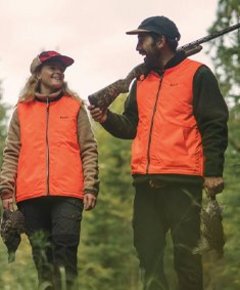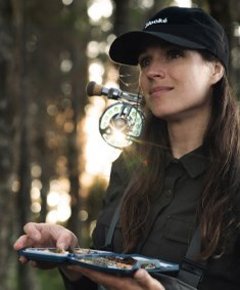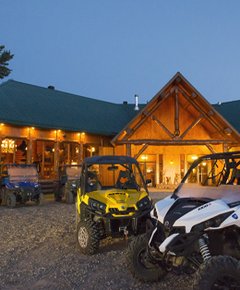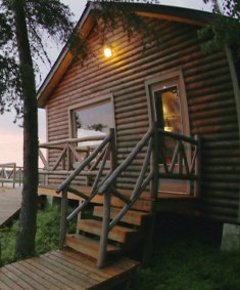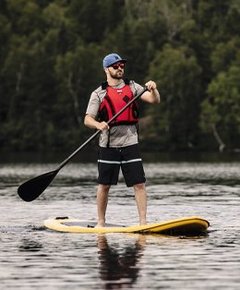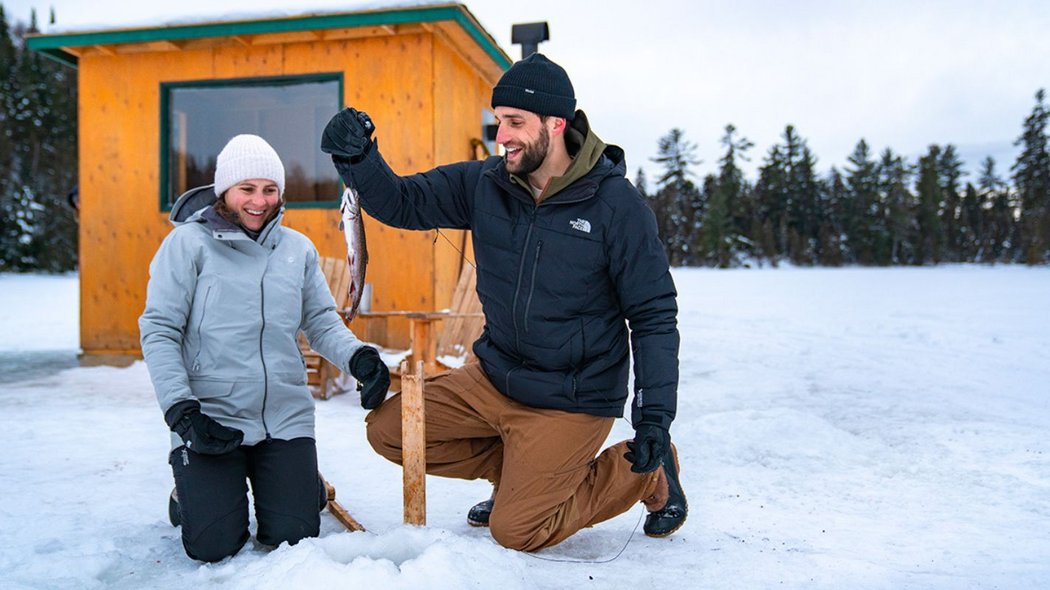
No matter how cold it gets in winter, outfitters don’t take a break! There are 51 outfittersThis link will open in a new window in eight Quebec regions that offer ice fishing. It’s the perfect way to introduce children and adults alike to the joys of fishing. Generally available from January to mid-March, ice fishing requires very little equipment since the tip-ups are already set up on the frozen lakes. Interested? Then let's get into it!
How to get started
First you need to know that the outfitter will take care of setting up your tip-ups—these are small fishing rods installed in the ice. A line is placed on a wooden rod and put in the water so that the person fishing doesn’t have to hold it all the time. Then you just wait for a nibble!
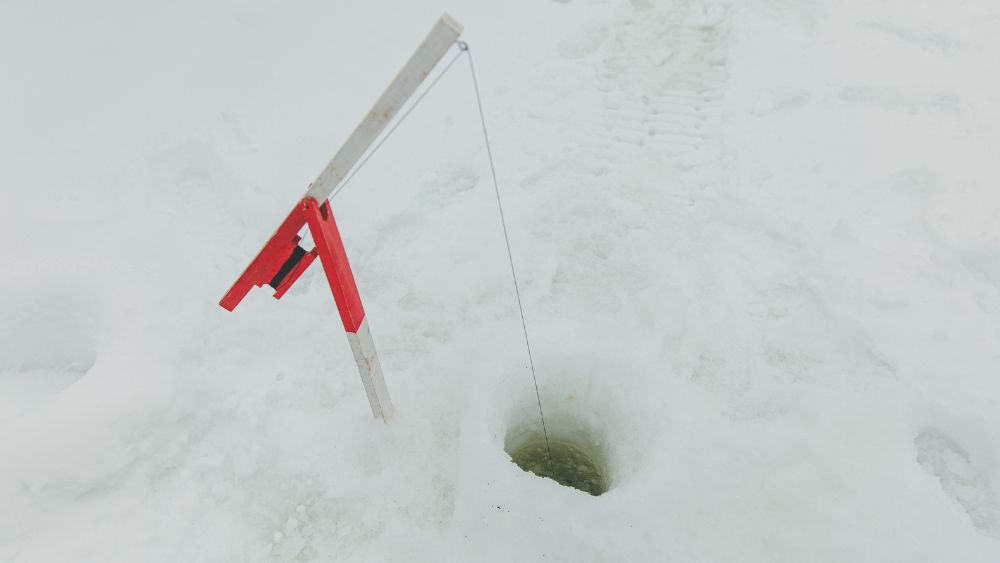
What do you need to wear for a day of ice fishing? Well that depends on the location you choose. Some outfitters install the tip-ups in small cabins, which are sometimes heated, shielding you from the elements. We recommend dressing warmly, in layers, so that you can adjust your comfort level to the facilities available on site.

What can you fish for under the ice? Quite a lot of different species! Besides tomcod, also known as frostfish, there are many other speciesThis link will open in a new window that live in icy cold water, including trout, perch, walleye, pike, halibut, cod and bass. As you can see, there’s no lack of variety! At Domaine BazinetThis link will open in a new window, there’s even a “mystery” trout species. If you catch one of these, you’ll be entered into a draw for a winter getaway at the outfitters. An exciting day guaranteed!
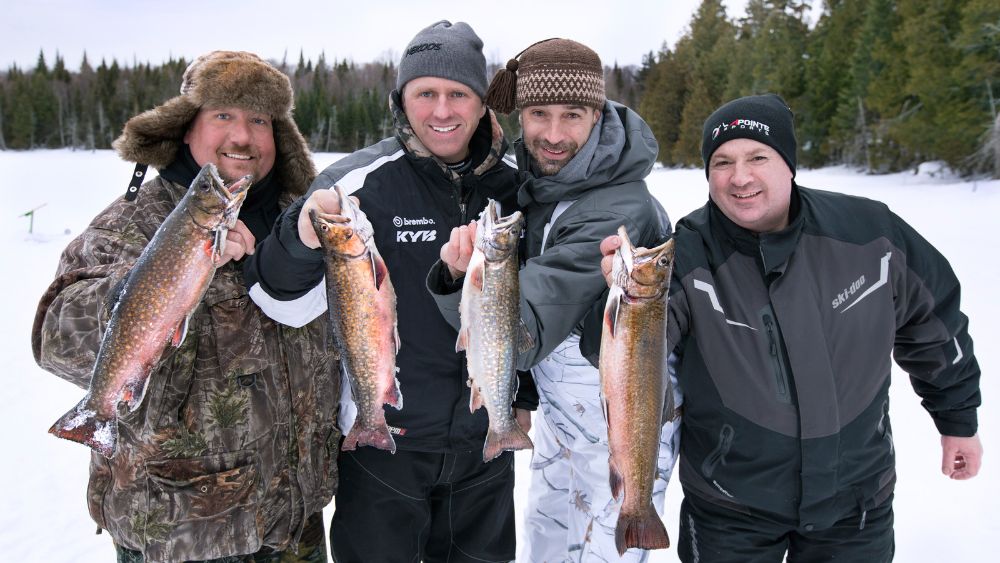
You should be aware that fishing quotasThis link will open in a new window also apply to ice fishing. Your outfitter will have all the information. Be sure to ask them about it.
Solid ice for some solid fun
Frozen waters are the playground for ice fishing enthusiasts, but ice safety must always remain a priority. Rest assured, outfitters are experts in this and take every precaution to ensure the surface is safe for you. But forewarned is forearmed, so here's some practical information you should know before heading out.
To fish in safety, the ice must be at least 10 centimetres (4 inches) thick. Another good indicator of ice strength is its colour: clear or black ice is the strongest, while white ice is the weakest and only half as strong as black ice.
Snowmobile safety requires at least 12 centimetres (5 inches) of new, transparent ice. Don’t even think about heading onto ice that’s less than 7 centimetres thick. Keep a close eye on this!
Fish, rest, repeat!
Now that you know the basics, it’s time to plan an ice fishing trip. Gather your family, friends or coworkers and make your way to an outfitter!
For day trips, you can bring your own food to have something to snack on between catches. It’s a great way to have fun for less!
For longer stays, outfitters also offer a wide range of comfortable accommodationsThis link will open in a new window. Whatever your preference—cabin or lodge— you’re sure to find the ideal place. Some outfitters even drill holes directly in front of your cabin on the edge of the lake. Now that’s service!
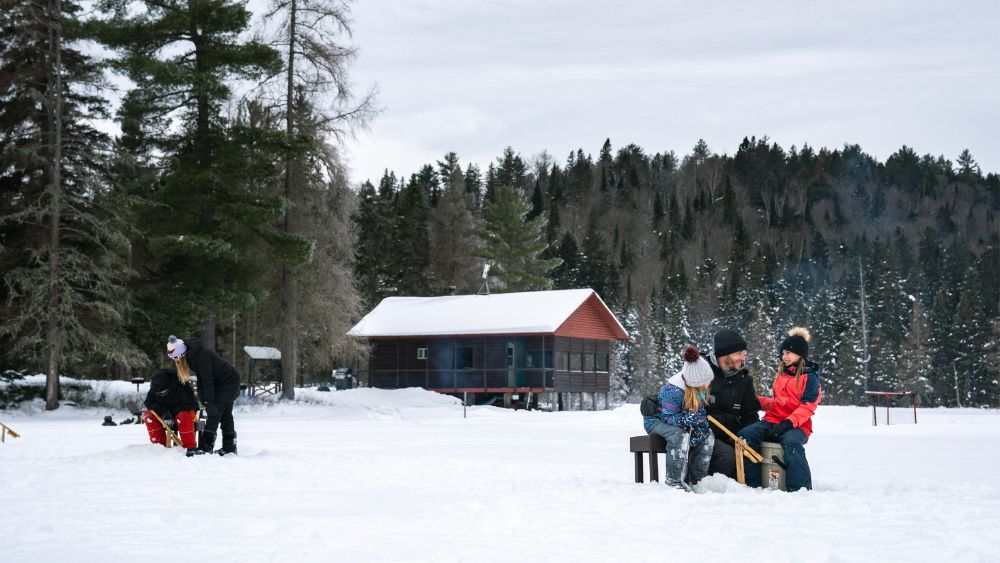
Of course, you can complement your stay with a multitude of other winter activities, including snowmobiling, ATVing, cross-country skiing, snowshoeing, sledding and skating. There’s something for everyone at Quebec’s outfitters!
